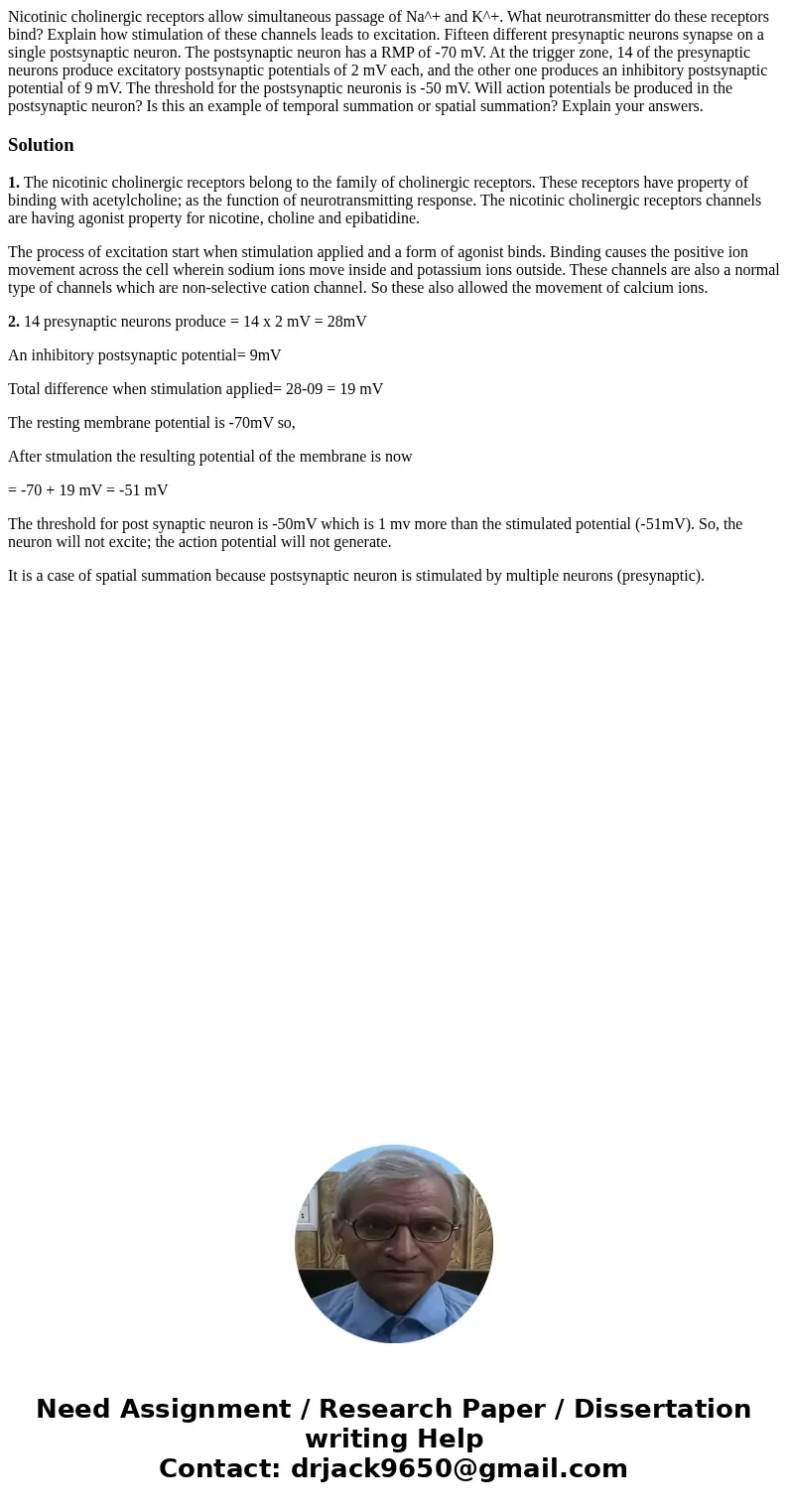Nicotinic cholinergic receptors allow simultaneous passage o
Solution
1. The nicotinic cholinergic receptors belong to the family of cholinergic receptors. These receptors have property of binding with acetylcholine; as the function of neurotransmitting response. The nicotinic cholinergic receptors channels are having agonist property for nicotine, choline and epibatidine.
The process of excitation start when stimulation applied and a form of agonist binds. Binding causes the positive ion movement across the cell wherein sodium ions move inside and potassium ions outside. These channels are also a normal type of channels which are non-selective cation channel. So these also allowed the movement of calcium ions.
2. 14 presynaptic neurons produce = 14 x 2 mV = 28mV
An inhibitory postsynaptic potential= 9mV
Total difference when stimulation applied= 28-09 = 19 mV
The resting membrane potential is -70mV so,
After stmulation the resulting potential of the membrane is now
= -70 + 19 mV = -51 mV
The threshold for post synaptic neuron is -50mV which is 1 mv more than the stimulated potential (-51mV). So, the neuron will not excite; the action potential will not generate.
It is a case of spatial summation because postsynaptic neuron is stimulated by multiple neurons (presynaptic).

 Homework Sourse
Homework Sourse